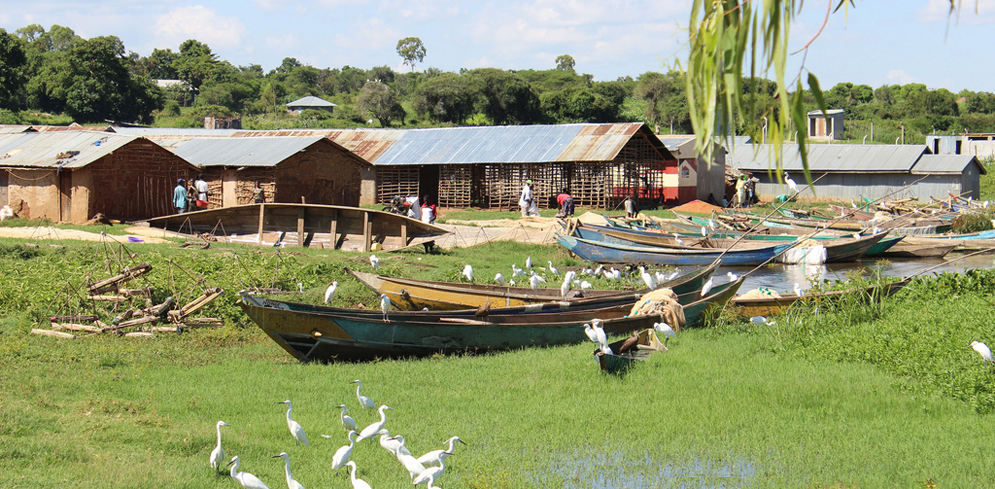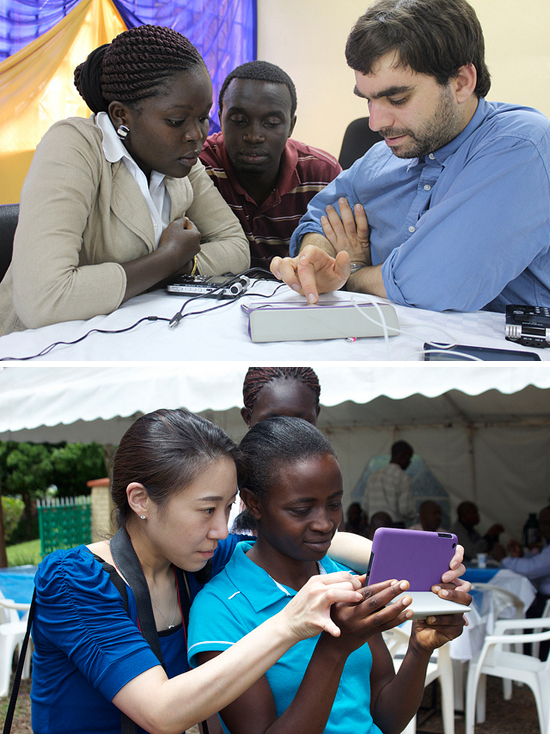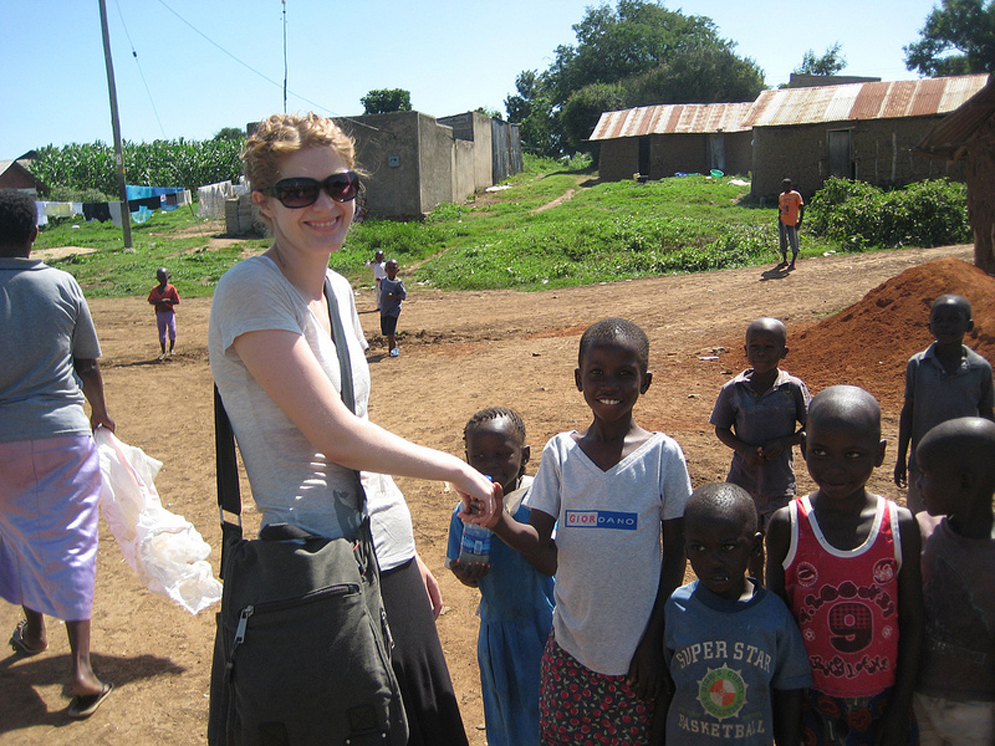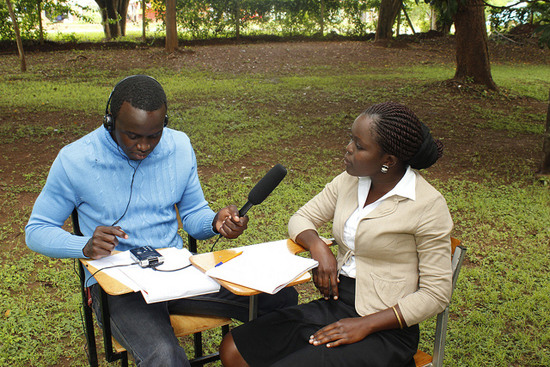Dateline: Kenya
BU students report from the field on impact of foreign aid

BU students spent two weeks in Kenya last spring reporting and producing stories about the impact of foreign aid through the Pamoja Together program. Photos courtesy of Pamoja Together
For students interested in a public health or a journalism career abroad, the opportunity was irresistible: travel to Kenya for two weeks and come back with stories about how foreign aid has changed recipients’ lives. Last May eight BU students earned that chance through Pamoja Together, a student-powered global news network that is part of BU’s Program on Crisis Response and Reporting—an interdisciplinary collaboration between the Pulitzer Center on Crisis Reporting, in Washington, D.C., the College of Communication, the School of Public Health, and the Center for Global Health & Development. The project was funded by a $100,000 grant from the Bill & Melinda Gates Foundation. Tom Scott, director of global brand and innovation at the Gates Foundation, says the foundation liked the project because it spotlights “fresh voices of young people and is connecting them with a donor country and a recipient country.” The experience, he adds, could someday lead students to become strong advocates of foreign aid.

The Kenya trip was an intensive experience for the students, who had to learn how to get the story, on deadline, while navigating a foreign language and culture. “It was not about a travel abroad for BU students,” says Anne Donohue (COM’88), a COM associate professor of journalism and one of four BU faculty who provided guidance for the team. The others are Elizabeth Mehren, a COM professor of journalism, Jennifer Beard (SPH’06), an SPH assistant professor of international health, and Monica Onyango (SPH’99), an SPH clinical assistant professor of international health. Pamoja, which is Kiswahili for “together,” involved collaboration among the BU students and 10 students from Great Lakes University of Kisumu and Jaramogi Oginga Odinga University of Science and Technology, both in Kenya. Together the students explored story ideas, tracked down sources, and conducted interviews. One problem that emerged was the Kenyan students’ lack of journalism experience and exposure to the audio, video, photography, or iPad technology they would be using. Thomas Fiedler (COM’71), dean of COM, funded a trip for COM senior media producer Jake Kassen (COM’04) and Jeungah Kim (SED’14) so they could spend a week training the Kenyans before the rest of the BU entourage arrived. Pamoja Together participant Laura Hanson (SPH’13), who also helped, was later joined by colleagues Elizabeth Daube (SSW’11, SPH’13), Jessica Wiley (SPH’14), Miluka Gunaratna (SPH’14), Lindsay Hamsik (CAS’13, COM’13, GRS’14), Jeremy Hartman (COM’13, CAS’13), Jim Dandee (COM’14), and Kasha Patel (COM’13). The Kenyans, says Donohue, “took to the technology like ducks to water.” By the end of the week, each had produced a short biographical video about another student.

Elizabeth Daube (SSW’11, SPH’13) and some of the many friends she made while reporting in the field.
The BU and Kenyan students paired up according to personal interest to produce stories within a two-week window. Text was accompanied by a slideshow, a picture gallery, or video. They produced 16 stories on topics covering sexuality and gender, disability, health, the environment, education, and employment. Dandee made a video of a man who walked the streets daily gathering recyclable goods in exchange for pay from an environmental and sanitation project called Bamato. Wiley wrote about and photographed pregnant women and the battle against malaria, describing the ways local clinics provide antimalarial medication and care through foreign aid. Hanson blended text with audio clips chronicling the unlikely path followed by her Kenyan partner, Lawrence Otieno Nyanya, in his determination to become a teacher. One of 12 children born to subsistence farmers, he had to work numerous jobs before finally entering high school at age 26. A scholarship funded through the World Bank is paying for his college tuition. And Hartman, after being hit by a double whammy of malaria and dysentery, spent most of his time exploring the inner workings of the Kenyan health care system. Reporting in Kenya presented interesting challenges. Hanson and Nyanya confronted a problem that many international correspondents face: they had the opportunity to nail a great story, but felt they were taking advantage of a source’s vulnerable situation. While visiting a gold mine, they saw workers using mercury to separate gold. As a public health student, Hanson wanted to preach about the dangers this posed to the workers’ health and to the environment, but as a budding journalist, she felt equally compelled to grab an incredible story that would expose the risky nature of gold mining. “It was a difficult and confusing situation,” she says. “In that moment, I didn’t do a great job at wearing either hat.”

And while Hanson and Nyanya were working together as equals, the Kenyans they interviewed assumed he was being paid to help. They also wanted a slice of the pie. “It’s conflicting to tell people that you can’t give them something when they have given up their workday to meet with you, all while you carry thousands of dollars worth of equipment in your bag,” Hanson says. “It made for some very uncomfortable moments.” Dandee also felt uncomfortable with the way Kenyans stared, shouted, or stopped him on the street to ask questions about what it was like living in the United States. “It can be a lot,” he says. “It’s a good type of attention, but a lot of attention.” He also found that flexibility and patience are necessary when reporting abroad. One person who had promised to help him find subjects for a story bailed, and he was forced to rework his story while on location. Patel discovered the frustrations of riding in matatus, local buses that take hours to arrive at their destination and are often teeming with passengers, packages, and—quite often—poultry. And she learned that some stories require a delicate hand, especially when they threaten to expose local corruption. Despite the obstacles, the Pamoja team returned from the field with solid stories—and some life lessons. Hanson, who hopes to merge journalistic writing with her career in public health, learned that “people and issues are always far more complicated than at face value. Getting a good story takes a lot of time and really depends on being a good observer and being able to digest what you see quickly.” For the BU students, the trip provided some valuable insight into the strengths, and on occasion, the shortcomings of foreign aid: it can fund new programs and bolster existing ones. But it can also be manipulated by unscrupulous officials. “Give aid to the right people and they’re going to flourish,” says Dandee. “Give it to the wrong people and they won’t.”
Comments & Discussion
Boston University moderates comments to facilitate an informed, substantive, civil conversation. Abusive, profane, self-promotional, misleading, incoherent or off-topic comments will be rejected. Moderators are staffed during regular business hours (EST) and can only accept comments written in English. Statistics or facts must include a citation or a link to the citation.